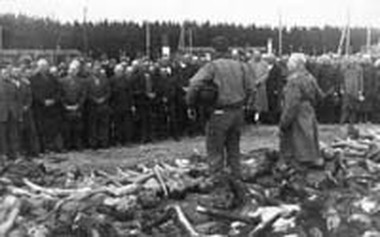
From History.com:
“The word "Holocaust," from the Greek words "holos" (whole) and "kaustos" (burned), was historically used to describe a sacrificial offering burned on an altar. Since 1945, the word has taken on a new and horrible meaning: the mass murder of some 6 million European Jews (as well as members of some other persecuted groups, such as Gypsies and homosexuals) by the German Nazi regime during the Second World War. To the anti-Semitic Nazi leader Adolf Hitler, Jews were an inferior race, an alien threat to German racial purity and community. After years of Nazi rule in Germany, during which Jews were consistently persecuted, Hitler's "final solution"--now known as the Holocaust--came to fruition under the cover of world war, with mass killing centers constructed in the concentration camps of occupied Poland. “
With less survivors alive today, we talk about the Holocaust or Shoah through documents.
An excerpt from Henry Donaggio and Diego Guzzi, two Italian philosophers who wrote the book, A Proper Distance. Imagine and Remember the Holocaust.
“Hints at a solemnity mixed with uncertain discomfort. Formal or reckoning: a block of people petrified by a serious thought. Collected against their will in a place close to home where for years he has consumed what is now everyone must see.
So reads the caption: "Dachau, Germany, 1945, American soldiers forcing locals to visit the camp." More and more, however, specify the item under which the image is stored laconically: "forced confrontation."
Open your eyes, not the fire, forcing them to look at what we have always known in some blind spot of his own sensibility. A pedagogical brutal gesture to rip the veil of indifference that confuses viewers, accomplices, victims and witnesses. Roles difficult to interpret, without excuse or doubles, not only for men caught in the picture for us. “
The caption of the picture above reads:
"Dachau, Germany, 1945, American soldiers forcing locals to visit the camp."
 RSS Feed
RSS Feed
